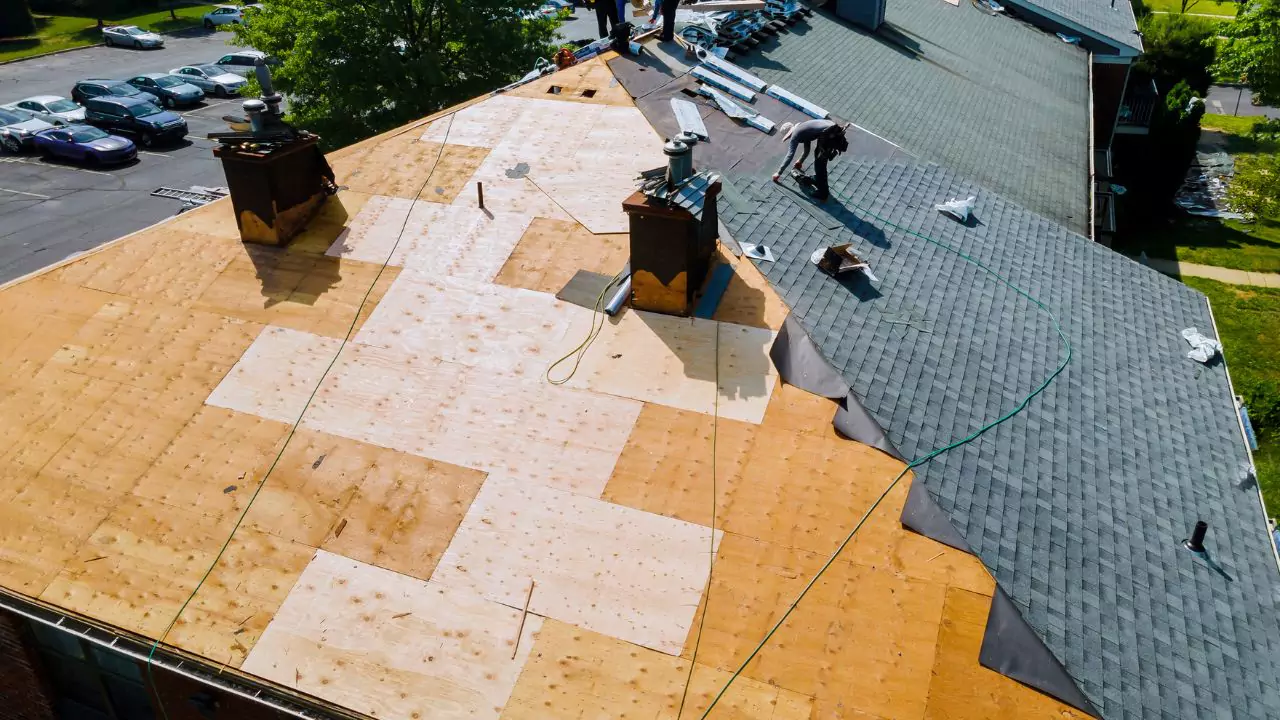Homeowners insurance can provide valuable financial protection if your roof suddenly needs replacement or repairs due to unexpected damage.
However not all roof problems are covered, and insurance will only pay for covered damage up to your policy limits and after your deductible is met.
Understanding what roof damage homeowners insurance does and does not cover can help you be prepared if you ever need to file a roof replacement claim.
What Roof Damage Does Homeowners Insurance Cover?
Homeowners insurance policies typically cover roof damage that is directly caused by certain covered perils that are outlined in your policy. Common covered causes of roof damage include:
- Storm damage like hail, high winds, or falling trees/branches.
- Weight of ice and snow.
- Fire damage from fires originating on or off the property.
- Vandalism and damage from fallen objects.
- Explosions.
- Lightning strikes.
Your insurance company will investigate the type of damage when you file a claim to confirm it aligns with one of your covered perils before approving roof replacement coverage.
Damage that results from normal wear and tear, lack of proper maintenance, or gradual deterioration over time is usually excluded from homeowners insurance coverage. Cosmetic damage that does not impact functionality, like discoloration or minor cracks, is also typically excluded.
Additionally, your roof’s age and material will be factored in when determining coverage eligibility. Most insurance policies place limits on roof replacement coverage for older roofs or may pro-rate benefits based on the expected lifetime of your existing roof.
Steps to Get Homeowners Insurance to Pay for Roof Replacement
If your roof suffers damage from a covered cause, there are a few key steps to take for the best chance of your homeowners insurance covering some or all of the roof replacement cost:
Understand and Document the Damage
Carefully examine your roof and interior ceilings for visible damage. Look for punctures, missing or cracked shingles, water stains on ceilings, or sections that appear warped or dipped. Take dated photos and video of any damage. Check the attic and basement for signs of leaks like water drips or damp insulation. Document all damage you find.
Review Roofing Insurance Coverage
Check your homeowners insurance policy details to confirm roof damage from the cause that impacted your home is a covered peril. Make note of your coverage amounts and applicable deductibles. Contact your insurance company with initial damage details and to start a claim.
Get a Roof Inspection from a Reputable Contractor
Schedule a roof inspection from an established local roofing contractor. Many insurers require a roof certification from a roofer to provide an objective damage assessment and accurate estimate for repair or full replacement costs.
File a Claim with Homeowners Insurance
Submit the roof inspection report, contractor estimates, and all documentation of the damage to your insurance company. Provide specific details on when the damage occurred and how it aligns with your covered policy perils. This provides your best chance for claim approval.
Schedule Roof Replacement with a Trusted Contractor
If approved, work with both the insurance adjuster and roofing contractor to establish fair pricing and fully coordinate payment. Hire a reliable roofing company with proper licensing and insurance to complete the covered roof replacement work.
Additional Considerations for Roof Replacement Coverage
There are a couple of extra factors to keep in mind when it comes to homeowners insurance and roof replacement:
Paying the Deductible Before Insurance Coverage Kicks In
Even with an approved claim, your policy deductible must be paid out-of-pocket before insurance coverage kicks in for repair costs. Deductible amounts vary, often $500-$1000 or higher. Factor this into your budget.
Pairing Homeowners Insurance with a Home Warranty for Extra Coverage
Since homeowners insurance does not cover general wear and tear or maintenance, some homeowners pair it with an affordable home warranty plan for additional protection. This can provide coverage for repairs not covered by homeowners insurance.
Knowing what to expect from your homeowners insurance policy regarding roof replacement can ensure you have adequate protection against unexpected roof damage. Being proactive with inspections and maintenance can also help avoid expensive repairs down the road.





